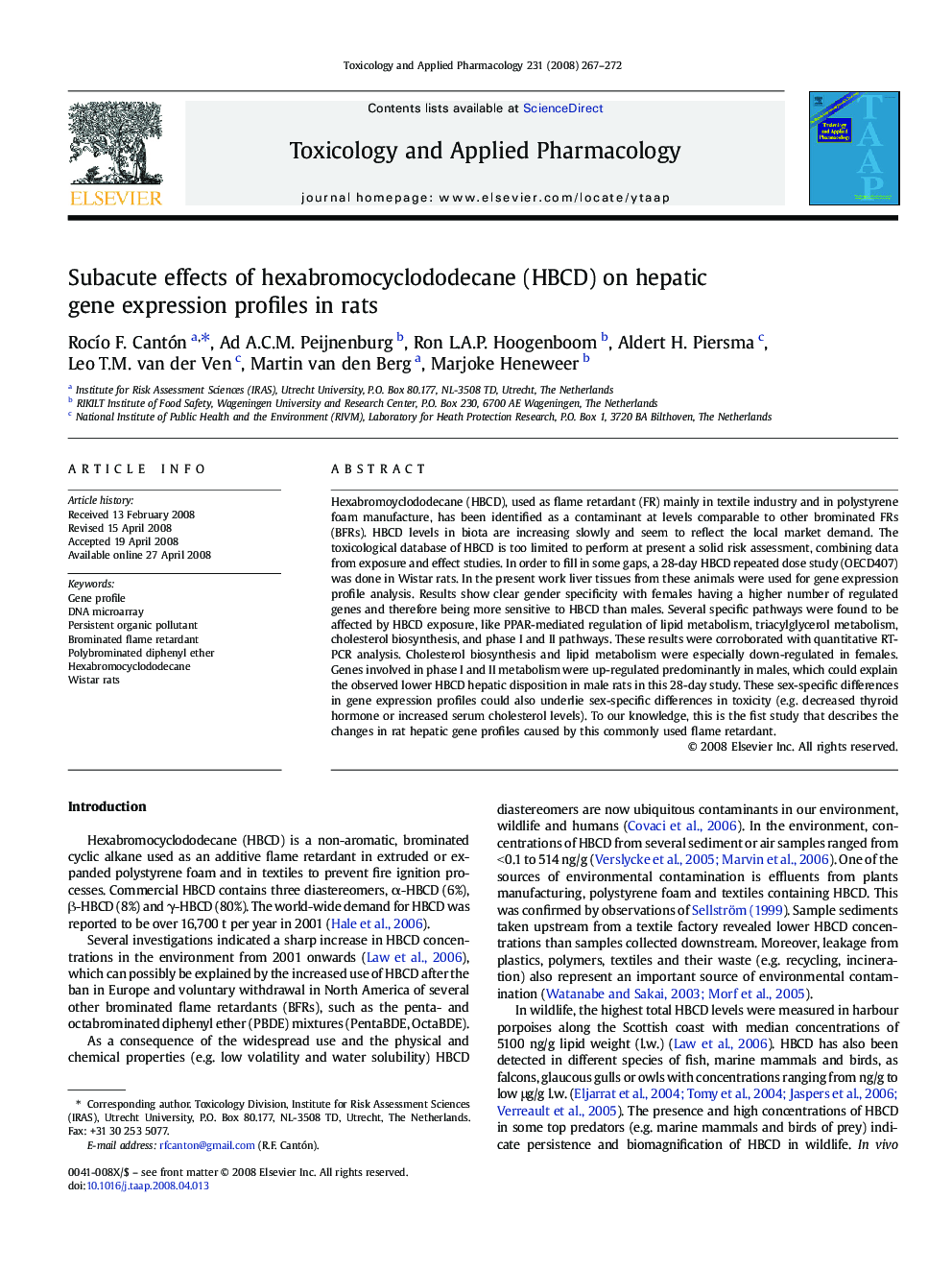| کد مقاله | کد نشریه | سال انتشار | مقاله انگلیسی | نسخه تمام متن |
|---|---|---|---|---|
| 2570255 | 1128576 | 2008 | 6 صفحه PDF | دانلود رایگان |

Hexabromoyclododecane (HBCD), used as flame retardant (FR) mainly in textile industry and in polystyrene foam manufacture, has been identified as a contaminant at levels comparable to other brominated FRs (BFRs). HBCD levels in biota are increasing slowly and seem to reflect the local market demand. The toxicological database of HBCD is too limited to perform at present a solid risk assessment, combining data from exposure and effect studies. In order to fill in some gaps, a 28-day HBCD repeated dose study (OECD407) was done in Wistar rats. In the present work liver tissues from these animals were used for gene expression profile analysis. Results show clear gender specificity with females having a higher number of regulated genes and therefore being more sensitive to HBCD than males. Several specific pathways were found to be affected by HBCD exposure, like PPAR-mediated regulation of lipid metabolism, triacylglycerol metabolism, cholesterol biosynthesis, and phase I and II pathways. These results were corroborated with quantitative RT-PCR analysis. Cholesterol biosynthesis and lipid metabolism were especially down-regulated in females. Genes involved in phase I and II metabolism were up-regulated predominantly in males, which could explain the observed lower HBCD hepatic disposition in male rats in this 28-day study. These sex-specific differences in gene expression profiles could also underlie sex-specific differences in toxicity (e.g. decreased thyroid hormone or increased serum cholesterol levels). To our knowledge, this is the fist study that describes the changes in rat hepatic gene profiles caused by this commonly used flame retardant.
Journal: Toxicology and Applied Pharmacology - Volume 231, Issue 2, 1 September 2008, Pages 267–272